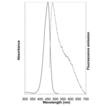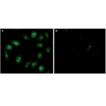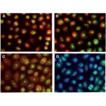- Compatible with common live-cell nuclear counterstains (Hoechst 33342, Draq5™, Vybrant® DyeCycle™ Ruby, NUCLEAR-ID® Red dyes)
- High resistance to photobleaching and concentration quenching, ensuring strong, consistent fluorescence signal, even after extended viewing periods
- Validated for utility in live cell imaging applications, demonstrating appropriate response to treatment with well-characterized organelle-perturbation agents
- Stringently manufactured, to control and eliminate non-specific assay artifacts
Enzo Life Sciences’ NUCLEOLAR-ID® Green Detection Kit contains a proprietary dye suitable for live-cell staining of nucleoli. The dye allows examination of nucleolar dynamic changes in intracellular distribution, trafficking and localization arising from biological processes such as the cell cycle and ribosome biogenesis. The kit is compatible with most fluorescence detection systems, including conventional and confocal fluorescence microscopes, as well as High Content Screening (HCS) platforms. This kit is specifically designed for visualizing nucleoli in living cells. The dye in the kit is resistant to photobleaching, facilitating its use in imaging applications. This nucleolar dye may be used in conjunction with common live-cell nuclear counterstains such as Hoechst 33342, Draq5™, Vybrant® DyeCycle™ Ruby and Enzo’s NUCLEAR-ID® Red dye. A control nucleolus perturbation agent, actinomycin D, is provided for monitoring changes in nucleolar dynamics. Potential applications for this kit include monitoring impaired ribosome biogenesis, inhibition of transcription, cell cycle dynamics and cellular stress, as well as the distribution, trafficking and dynamics of nucleolar proteins, the distribution of viral proteins, and potentially as an aid in identifying cancer cells.
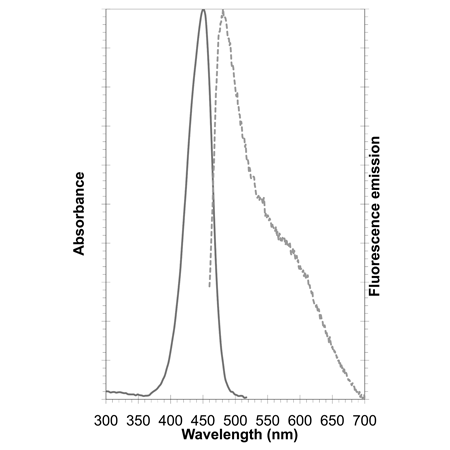
Figure 1: Excitation and emission spectra of NUCLEOLAR-ID®
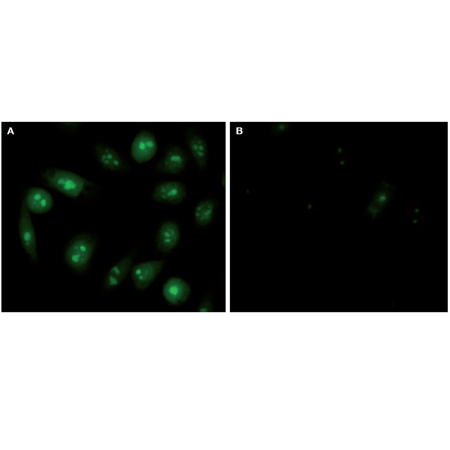
Figure 3: Cells stained with NUCLEOLAR-ID® Green Detection Reagent show maximal fluorescence signal within the nucleoli and faint fluorescence throughout the nucleus and cytoplasm, as shown in panel A. When the cells are treated with low doses of actinomycin D, loss of nucleolar staining is observed, as shown in panel B. Counterstaining with NUCLEAR-ID® Red Detection Reagent facilitates highlighting the nucleoli relative to the weak cytoplasmic staining.
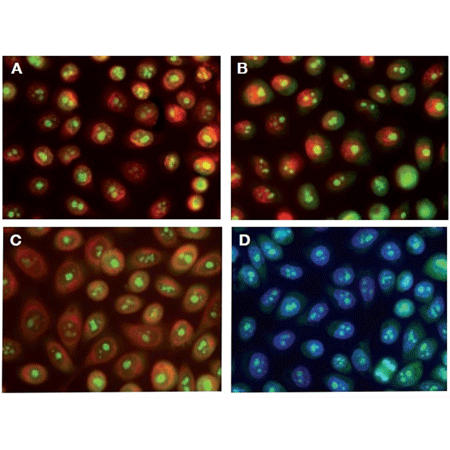
Figure 2: NUCLEOLAR-ID® Green dye stained live U2OS cells counterstained with NUCLEAR-ID® Red (A), Draq5™ (B), Vybrant® DyeCycle™ Ruby (C), and Hoechst 33342 (D). Nucleoli appear as green structures contrasted against the selected nuclear counterstain by fluorescence microscopy. As an RNA stain, the NUCLEOLAR-ID® Green dye displays some cytoplasmic staining as well, but the nuclear counterstain facilitates unambiguous identification of the nucleoli as green fluorescence signal within the confines of the highlighted nuclear fluorescence signal.
Please mouse over
Product Details
| Applications: | Fluorescence microscopy, Fluorescent detection
|
| |
| Application Notes: | Specifically designed for visualizing microscopically nucleoli in living cells. |
| |
| Quality Control: | - Absorption peak of NUCLEOLAR-ID® Green dye: λmax = 439 ± 9 nm
- % purity of NUCLEOLAR-ID® Green dye by HPLC: ≥93%
- A sample from each lot of NUCLEOLAR-ID® Green Detection Kit is used to stain HeLa cells using the procedures described in the user manual. Cells stained with NUCLEOLAR-ID® Green Detection Reagent show maximal fluorescence signal within the nucleoli, with only faint fluorescence throughout the nucleus and cytoplasm. Cells induced by actinomycin D show reduction of nucleolar signal.
|
| |
| Quantity: | 500 assays |
| |
| Use/Stability: | With proper storage, the kit components are stable up to the date noted on the product label. Store kit at -20°C in a non-frost free freezer, or -80°C for longer term storage. |
| |
| Handling: | Protect from light. Avoid freeze/thaw cycles. |
| |
| Shipping: | Dry Ice |
| |
| Short Term Storage: | -20°C |
| |
| Long Term Storage: | -80°C |
| |
| Contents: | NUCLEOLAR-ID® Green Detection Reagent, 50 µL
Actinomycin D Control, 125 µg
10X Assay Buffer, 15 mL |
| |
| Technical Info/Product Notes: | The NUCLEOLAR-ID® Green detection kit is a member of the CELLESTIAL® product line, reagents and assay kits comprising fluorescent molecular probes that have been extensively benchmarked for live cell analysis applications. CELLESTIAL® reagents and kits are optimal for use in demanding imaging applications, such as confocal microscopy, flow cytometry and HCS, where consistency and reproducibility are required. |
| |
| Regulatory Status: | RUO - Research Use Only |
| |
Product Literature References
Discovery and Optimization of Pyrrolopyrimidine Derivatives as Selective Disruptors of the Perinucleolar Compartment, a Marker of Tumor Progression toward Metastasis: K.J. Frankowski, et al.; J. Med. Chem.
65, 8303 (2022),
Abstract;
Inhibiting β-catenin disables nucleolar functions in triple-negative breast cancer: S.E. Weeks, et al.; Cell Death Dis.
12, 242 (2021),
Abstract;
Full Text
Isolation of nucleoli for characterization of nucleolar contents to uncover clues to metastatic progression: S.E. Weeks, et al.; Methods Mol. Biol.
2294, 269 (2021),
Abstract;
Novel role of the dietary flavonoid fisetin in suppressing rRNA biogenesis: S.C. Kammerud, et al.; Lab. Invest.
101, 1439 (2021),
Abstract;
Full Text
Uptake Pathways of Guandinylated Disulfide Containing Polymers as Nonviral Gene Carrier Delivering DNA to Cells: J. Zhang, et al.; J. Cell. Biochem.
118, 903 (2017),
Abstract;
Cell nuclei have lower refractive index and mass density than cytoplasm: M. Schürmann, et al.; J. Biophotonics
9, 1068 (2016),
Application(s): Fluorescence imaging of subnuclear structures,
Abstract;
Full Text
The noncoding RNAs SNORD50A and SNORD50B bind K-Ras and are recurrently deleted in human cancer: Z. Siprashvili, et al.; Nat. Genet.
48, 53 (2015),
Application(s): Localization of transfected SNORD50A and SNORD50B within the nucleolus ,
Abstract;
Full Text
A physical sciences network characterization of non-tumorigenic and metastatic cells: P. Network, et al.; Sci. Rep.
3, 1449 (2013),
Abstract;
Full Text
Labeling of polyethylenimine with fluorescent dye to image nucleus, nucleolus, and chromosomes in digitonin-permeabilized HeLa cells: M. Saito, et al.; Biosci. Biotechnol. Biochem.
76, 1777 (2012),
Abstract;
Mismatch in mechanical and adhesive properties induces pulsating cancer cell migration in epithelial monolayer: M.H. Lee, et al.; Biophys. J.
102, 2731 (2012),
Abstract;
Full Text
AFM stiffness nanotomography of normal, metaplastic and dysplastic human esophageal cells: A. Fuhrmann, et al.; Phys. Biol.
8, 015007 (2011),
Application(s): Fluorescence lifetime imaging of normal and dysplasic esophageal cells,
Abstract;
Full Text
General Literature References
Nucleolus: the fascinating nuclear body: V. Sirri, et al.; Histochem. Cell. Biol.
129, 13 (2008),
Abstract;
Regulators of nucleolar functions: D. Hernandez-Verdun & P. Roussel; Prog. Cell Cycle Res.
5, 301 (2003),
Abstract;
Immunocytochemical localization of nucleophosmin and RH-II/Gu protein in nucleoli of HeLa cells after treatment with actinomycin D: K. Smetana, et al.; Acta Histochem.
103, 325 (2001),
Abstract;
Related Products







